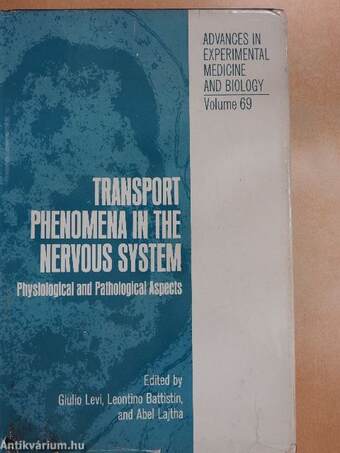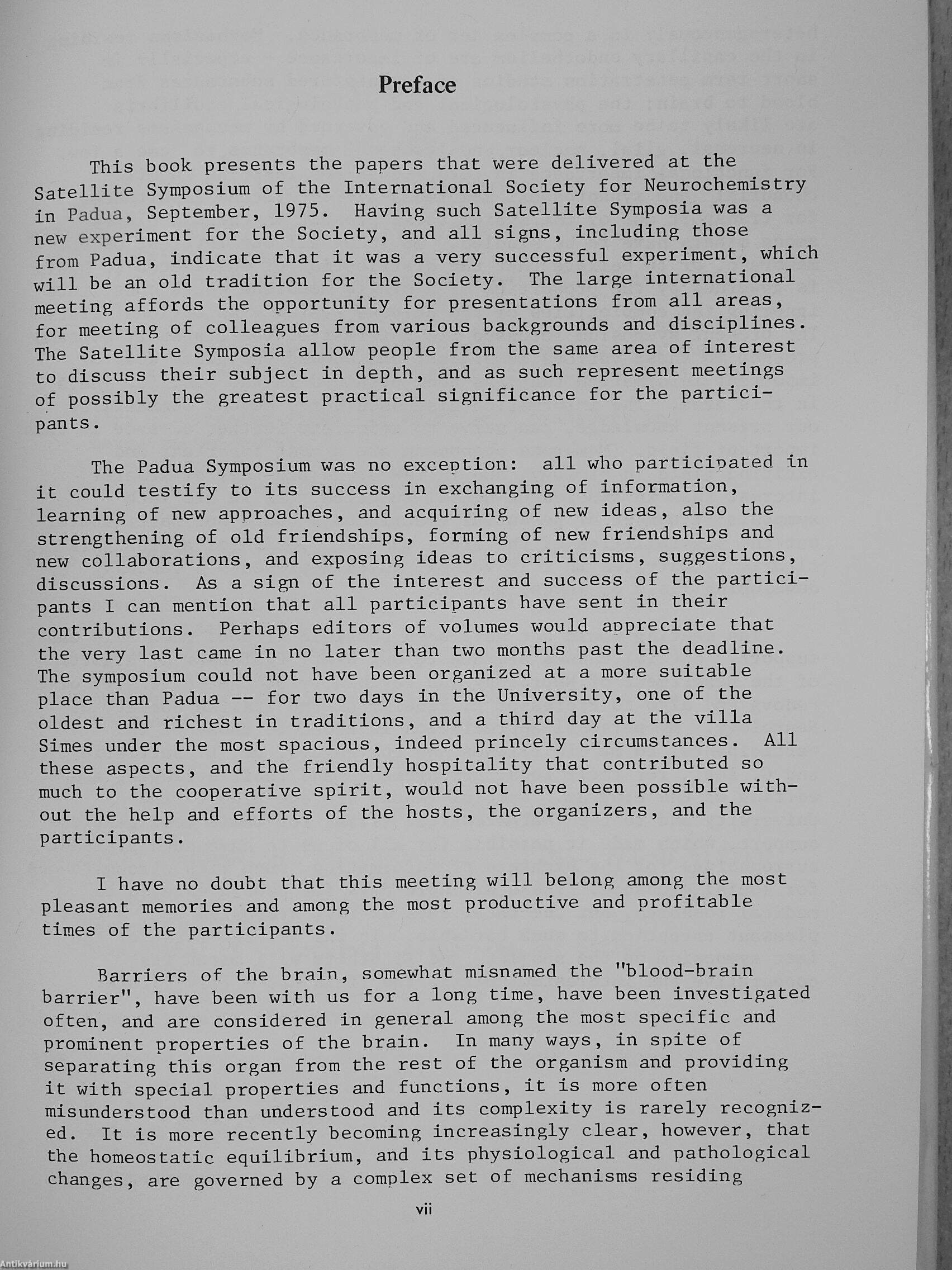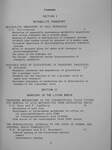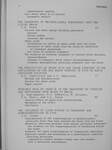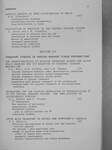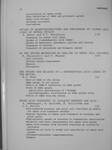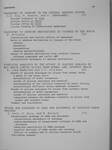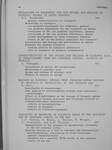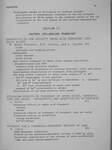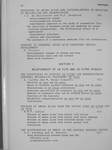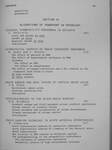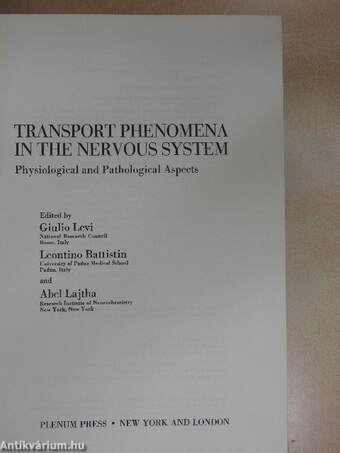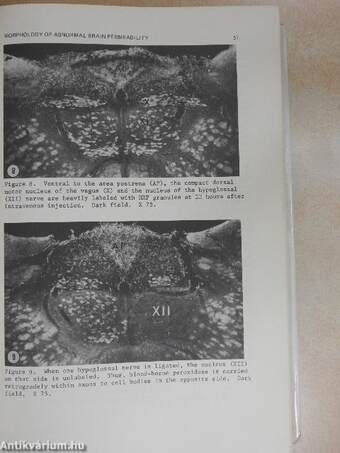1.067.672
kiadvánnyal nyújtjuk Magyarország legnagyobb antikvár könyv-kínálatát

VISSZA
A TETEJÉRE
JAVASLATOKÉszre-
vételek
Transport Phenomena in the Nervous System
Physiological and Pathological Aspects
| Kiadó: | Plenum Press |
|---|---|
| Kiadás helye: | New York |
| Kiadás éve: | |
| Kötés típusa: | Fűzött kemény papírkötés |
| Oldalszám: | 563 oldal |
| Sorozatcím: | Advances in Experimental Medicine and Biology |
| Kötetszám: | 69 |
| Nyelv: | Angol |
| Méret: | 26 cm x 17 cm |
| ISBN: | 0-306-39069-8 |
| Megjegyzés: | Fekete-fehér fotókkal, ábrákkal. További szerzők a könyvben. |
naponta értesítjük a beérkező friss
kiadványokról
naponta értesítjük a beérkező friss
kiadványokról
Előszó
TovábbFülszöveg
METABOLIC COMPARTMENTATION AND NEUROTRANSMISSION Relation to Brain Structure and Function
Edited by Soli Bar!
Mt. Sinai School of Medicine ^ , ^
D.D.Clarke
Fordham University
and Diana Schneider
Neurosciences Research Program
NATO Advanced Study Institutes Series Series A: Life Sciences, Volume 6
The sixth and latest volume in the highly acclaimed NATO Advanced Study Institutes Series in the life sciences, this comprehensive work describes the relationship between metabolism, localization, and function of neurotransmitter candidates and the morphology of the brain. By examining the critical relationships between biochemical and morphological heterogeneity in the central nervous system and the functional consequences which result from such heterogeneity, the book provides a sound basis for the understanding of CNS function. World-renowned neuroscientists explore the relationships between localization, metabolism, and function of such neurotransmitters or putative... Tovább
Fülszöveg
METABOLIC COMPARTMENTATION AND NEUROTRANSMISSION Relation to Brain Structure and Function
Edited by Soli Bar!
Mt. Sinai School of Medicine ^ , ^
D.D.Clarke
Fordham University
and Diana Schneider
Neurosciences Research Program
NATO Advanced Study Institutes Series Series A: Life Sciences, Volume 6
The sixth and latest volume in the highly acclaimed NATO Advanced Study Institutes Series in the life sciences, this comprehensive work describes the relationship between metabolism, localization, and function of neurotransmitter candidates and the morphology of the brain. By examining the critical relationships between biochemical and morphological heterogeneity in the central nervous system and the functional consequences which result from such heterogeneity, the book provides a sound basis for the understanding of CNS function. World-renowned neuroscientists explore the relationships between localization, metabolism, and function of such neurotransmitters or putative transmitters as glutamic acid, aspartic acid, GABA, and glycine, the catecholamines, serotonin, and acetylcholine.
A variety of disciplines are represented, each described with its own techniques:
• centrally acting drugs
• the separation of neuronal and neuropil fractions
• cultures of neuronal and glial cell lines derived from tumors
Other techniques utilize synaptosomal preparations for the study of uptake, release, and metabolism of putative transmitter agents. Enzyme distribution in the metabolism of these agents is analyzed, as are the neurophysiological effects of these substances and their antagonists. Neuroanatomists contribute further understanding of the mechanisms by which transmitter release and inactivation are related to ultrastructural localization. In addition, consideration is given to computer models of the flux of metabolites related to transmitter substances. Vissza
Témakörök
- Orvostudomány > Élettan
- Orvostudomány > Patológia
- Idegennyelv > Idegennyelvű könyvek > Angol > Orvostudomány
- Orvostudomány > Általános orvosi, egyéb > Idegennyelvű
- Orvostudomány > Általános orvosi, egyéb > Kutatások, kísérletek
- Orvostudomány > Ideg, elme > Idegennyelvű
- Orvostudomány > Ideg, elme > Neurológia
- Orvostudomány > Orvosi idegennyelvű könyvek > Általános orvosi
- Orvostudomány > Orvosi idegennyelvű könyvek > Élettan
- Orvostudomány > Orvosi idegennyelvű könyvek > Ideg, elme
- Orvostudomány > Orvosi idegennyelvű könyvek > Patológia



